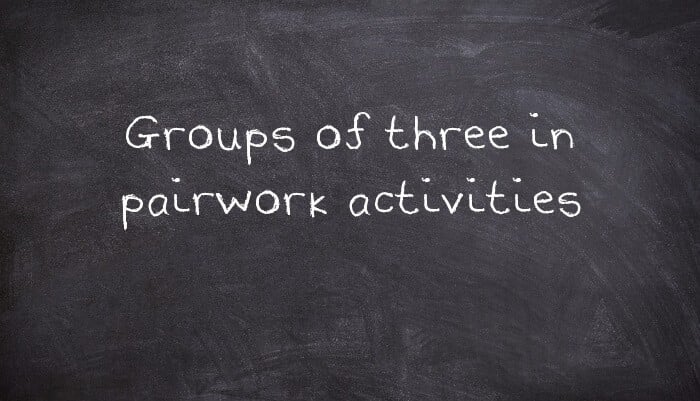Dealing with a group of three students during pairwork can present challenges for a teacher, but it can also offer opportunities to shake things up in the classroom. This article focuses on strategies for handling this situation, while a separate article will explore the positive aspects of having a group of three.
What to do if you have a group of three students when doing pairwork
In many classes, it is common to have an odd number of students, leading to the presence of an extra student when pairing them up as Student A and Student B. This can occur unexpectedly due to absences as well. Here are some techniques to manage an odd number of students:
- Provide guidance to the group of three after giving instructions to the whole class
- Have two students share the Student B worksheet or role
- Divide the Student B role between two students (taking turns or switching halfway through)
- Create a Student C worksheet for odd-numbered groups, ensuring they finish at the same time as smaller groups
- Give the odd student a different role, such as assisting the other two in speaking
- Rotate students in and out of the group of three to avoid consistent grouping
Possible roles for third students
Consider assigning unique roles to the third student to enhance the activity experience, such as a receptionist or shop manager.
- Receptionist
- Expert receiving forwarded emails
- Shop manager assisting
- Handling payments after selecting goods
- Maître d’ greeting guests
Things third students can do while waiting
While waiting for their partners to complete an activity, the third student can engage in various tasks like providing feedback, chairing the meeting, or timing the activity.
An easy way to create Student C worksheets
For activities like discussion questions, creating a Student C worksheet can be simplified by combining sections from Student A and Student B worksheets.






